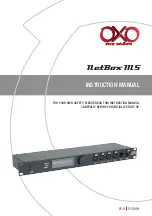
GENERATOR USE
CONNECTIONS TO A BUILDING ELECTRICAL SYSTEM
Connections for standby power to a building’s electrical system must
be made by a qualified electrician. The connection must isolate the
generator power from utility power, and must comply with al l
applicable laws and electrical codes.
Improper connections to a building electrical system can allow
electrical current from the generator to backfeed into the utility lines.
Such backfeed may electrocute utility company workers or others
who contact the lines during a power outage, and the generator may
explode, burn, or cause fires when utility power is restored. Consult
the utility company or a qualified electrician.
EARTHING SYSTEM
Portable generators have a system earth that connects generator
frame components to the earth terminals in the AC output sockets. The
system earth is not connected to the AC neutral wire. If the
generator is tested by a socket tester, it will not show the same earth
circuit condition as for a home socket.
SPECIAL REQUIREMENTS
Keep all cooling holes open and clear of debris, mud, water, etc.
Cooling holes are located on the side panel, the control panel, and the
bottom of the generator. If the cooling holes are blocked, the
generator may overheat and damage the engine, inverter, or windings.
Do not lay the generator on its side when moving, storing, or
operating it. Oil may leak and damage the engine or your property.
In some areas, generators are required to be registered with local
utility companies.
If the generator is used at a construction site, there may be
additional regulations that must be observed.
14















































